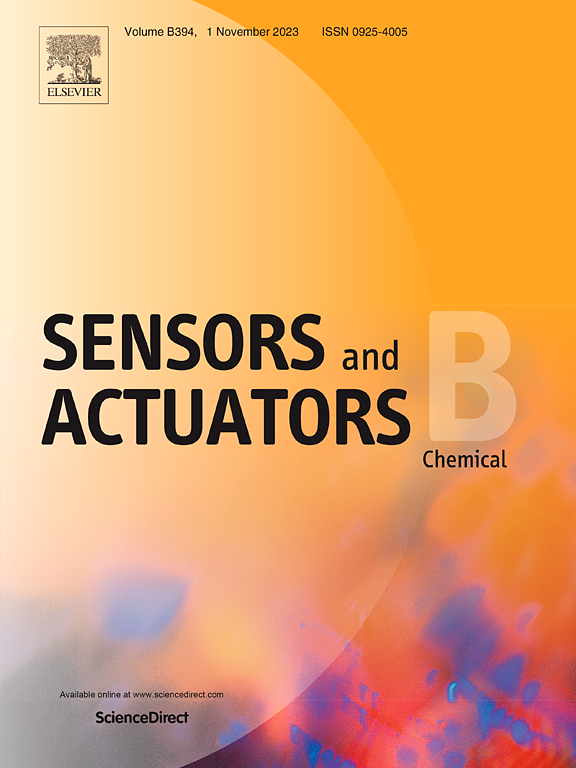流体和电气模块接口:微全分析系统和微气相色谱的模块化方法
IF 8
1区 化学
Q1 CHEMISTRY, ANALYTICAL
引用次数: 0
摘要
微总分析系统(μTAS)或芯片实验室设备已经成为(生物)化学分析和工程的强大、小型化平台。它们大大减少了样品试剂的体积要求,加快了处理时间,并实现了自动化,使其成为原位应用的理想选择。然而,由于设计限制、制造复杂性、功能多样化、苛刻的操作条件和不兼容的维护程序,在μTAS内集成流体、电气和机械组件仍然具有挑战性,最终阻碍了μTAS的广泛采用。在这里,我们提出了标准化的流体和电气模块化接口(FEMI)架构,这是一种可扩展的集成方法,将模块化与单片集成的性能相结合。FEMI通过将组件包装为可拆卸的墨盒,为微流控芯片提供易于拆卸,气密,耐热,低死体积的流体连接,带有侧端口和可拆卸的电气接口。为了证明其潜力,我们开发了FEMI-GC,一种用于检测痕量挥发性有机化合物(VOCs)水平的微气相色谱(μGC)系统。FEMI-GC包括用于样品预浓缩的微预浓缩器(μPC),用于样品分离的微分离柱(μSC)和用于化合物检测的现成光电离检测器(PID),所有这些都在紧凑的占地面积(3.75 L, 2 kg)内。它还具有用于精确流量控制的3d打印针阀和微流体路由板(μFRB),以通过各个阶段直接流动。该界面可以承受275℃的工作温度和压力。FEMI-GC检测VOCs的检测限为0.73 ppb,测试检测动态范围为5万倍。这项工作建立了FEMI作为一种可扩展的方法,允许快速开发和采用鲁棒模块化μTAS。本文章由计算机程序翻译,如有差异,请以英文原文为准。

Fluidic and Electrical Modular Interfacing: A modular approach to micro total analytical systems and micro gas chromatography
Micro total analytical systems (μTAS) or lab-on-chip devices have emerged as powerful, miniaturized platforms for (bio)chemical analysis and engineering. They drastically reduce sample-reagent volume requirements, accelerate processing times, and enable automation, making them ideal for in-situ applications. However, integrating fluidic, electrical, and mechanical components within μTAS remains challenging due to design constraints, manufacturing complexities, diverse functionalities, demanding operating conditions, and incompatible maintenance procedures, ultimately hindering the widespread adoption of μTAS. Here, we present the standardized Fluidic and Electrical Modular Interfacing (FEMI) architecture, a scalable integration approach that combines modularity with the performance of monolithic integration. FEMI facilitates easy-to-remove, gas-tight, heat-resistant, low-dead-volume fluidic connections for microfluidic chips with side ports alongside detachable electrical interfaces by packaging the components as removable cartridges. To demonstrate its potential, we developed FEMI-GC, a micro gas chromatography (μGC) system for detecting trace levels of volatile organic compounds (VOCs). FEMI-GC includes a micro-preconcentrator (μPC) for sample preconcentration, a micro-separation column (μSC) for sample separation, and an off-the-shelf photoionization detector (PID) for compound detection, all within a compact footprint (3.75 L, 2 kg). It also features 3D-printed needle valves for precise flow control and a micro-fluidic routing board (μFRB) to direct flows through various stages. The interfacing could withstand operating temperatures >275 ˚C and pressures > 40 psi, enabling FEMI-GC to detect VOCs with a detection limit of 0.73 ppb and offer a tested detectable dynamic range of >50,000x. This work establishes FEMI as a scalable approach for allowing the rapid development and adoption of robust modular μTAS.
求助全文
通过发布文献求助,成功后即可免费获取论文全文。
去求助
来源期刊

Sensors and Actuators B: Chemical
工程技术-电化学
CiteScore
14.60
自引率
11.90%
发文量
1776
审稿时长
3.2 months
期刊介绍:
Sensors & Actuators, B: Chemical is an international journal focused on the research and development of chemical transducers. It covers chemical sensors and biosensors, chemical actuators, and analytical microsystems. The journal is interdisciplinary, aiming to publish original works showcasing substantial advancements beyond the current state of the art in these fields, with practical applicability to solving meaningful analytical problems. Review articles are accepted by invitation from an Editor of the journal.
 求助内容:
求助内容: 应助结果提醒方式:
应助结果提醒方式:


